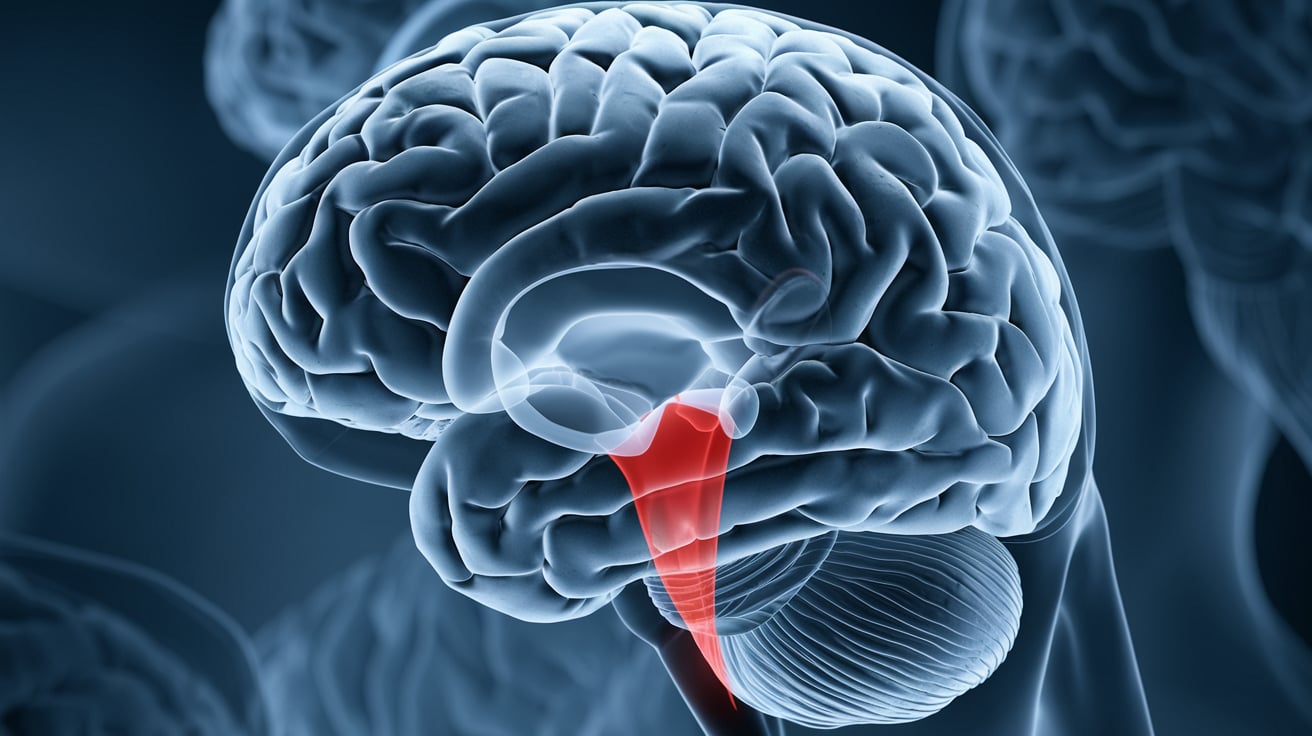
Aqueductal stenosis is a condition that affects the brain's ventricular system, causing a blockage in the flow of cerebrospinal fluid (CSF). This blockage can lead to hydrocephalus, a buildup of fluid in the brain, which can cause increased pressure and swelling. Understanding this condition is crucial because it can affect people of all ages, from infants to adults. Symptoms might include headaches, nausea, vision problems, and cognitive difficulties. Early diagnosis and treatment are vital to managing the condition effectively. Treatments often involve surgical procedures to relieve the blockage and restore normal CSF flow. Let's dive into 30 essential facts about aqueductal stenosis to help you grasp its impact and management.
What is Aqueductal Stenosis?
Aqueductal stenosis is a condition where the narrow passageway connecting the third and fourth ventricles in the brain becomes blocked. This blockage can lead to an accumulation of cerebrospinal fluid, causing increased pressure inside the skull. Here are some interesting facts about this condition.
-
Aqueductal stenosis is a common cause of hydrocephalus. Hydrocephalus is a condition characterized by an excessive buildup of cerebrospinal fluid in the brain.
-
The condition can be congenital or acquired. Congenital aqueductal stenosis is present at birth, while acquired cases can develop later due to infections, tumors, or trauma.
-
Symptoms vary depending on the age of onset. In infants, symptoms may include an unusually large head, vomiting, irritability, and sleepiness. Older children and adults might experience headaches, nausea, vision problems, and difficulty with balance.
-
Diagnosis often involves imaging techniques. MRI and CT scans are commonly used to visualize the brain's ventricles and identify blockages.
-
Treatment typically requires surgical intervention. The most common procedure is the insertion of a shunt to drain excess fluid from the brain to another part of the body.
Causes and Risk Factors
Understanding the causes and risk factors can help in early detection and management of aqueductal stenosis.
-
Genetic factors can play a role. Some cases of congenital aqueductal stenosis are linked to genetic mutations.
-
Infections during pregnancy can increase risk. Maternal infections like rubella or cytomegalovirus can contribute to the development of congenital aqueductal stenosis.
-
Brain tumors can cause acquired aqueductal stenosis. Tumors can block the aqueduct, leading to fluid buildup.
-
Head injuries are another risk factor. Trauma to the brain can result in scarring or blockages in the aqueduct.
-
Inflammatory diseases can also contribute. Conditions like meningitis can cause inflammation and subsequent blockage of the aqueduct.
Symptoms and Diagnosis
Recognizing the symptoms and understanding the diagnostic process is crucial for timely treatment.
-
Infants may exhibit a bulging fontanel. The soft spot on a baby’s head may bulge due to increased intracranial pressure.
-
Sunsetting eyes is a common symptom in infants. This refers to the downward deviation of the eyes, often seen in severe cases.
-
Older children might experience cognitive difficulties. Problems with memory, concentration, and learning can occur.
-
Gait disturbances are common in adults. Difficulty walking or maintaining balance can be a symptom.
-
Papilledema can be detected during an eye exam. Swelling of the optic disc, visible during an eye examination, indicates increased intracranial pressure.
Treatment Options
Various treatment options are available, each with its own benefits and risks.
-
Ventriculoperitoneal shunting is the most common treatment. This involves placing a tube from the brain to the abdomen to drain excess fluid.
-
Endoscopic third ventriculostomy (ETV) is another option. This minimally invasive procedure creates a new pathway for fluid to flow within the brain.
-
Medications can help manage symptoms. Diuretics and other drugs may be used to reduce fluid production or alleviate symptoms.
-
Regular follow-up is essential. Patients require ongoing monitoring to ensure the shunt or other treatments remain effective.
-
Physical therapy can aid recovery. Rehabilitation can help improve mobility and balance in affected individuals.
Prognosis and Long-term Outlook
The long-term outlook for individuals with aqueductal stenosis varies based on several factors.
-
Early diagnosis improves outcomes. Timely intervention can prevent severe complications and improve quality of life.
-
Shunt complications are a concern. Shunts can become blocked or infected, requiring additional surgeries.
-
Some individuals may experience developmental delays. Children with congenital aqueductal stenosis might face challenges in physical and cognitive development.
-
Regular monitoring is crucial. Lifelong follow-up with healthcare providers helps manage the condition effectively.
-
Support groups can provide valuable resources. Connecting with others facing similar challenges can offer emotional and practical support.
Research and Advances
Ongoing research is crucial for improving treatment and understanding of aqueductal stenosis.
-
Genetic research is uncovering new insights. Studies are identifying specific genes associated with congenital aqueductal stenosis.
-
Advances in imaging techniques are aiding diagnosis. Improved MRI and CT technology allow for more accurate and earlier detection.
-
New surgical techniques are being developed. Innovations in minimally invasive procedures are reducing recovery times and improving outcomes.
-
Stem cell research holds promise. Scientists are exploring the potential of stem cells to repair or regenerate damaged brain tissue.
-
Patient registries are enhancing research. Databases of patient information are helping researchers identify patterns and improve treatment protocols.
Final Thoughts on Aqueductal Stenosis
Aqueductal stenosis, a condition affecting the brain's fluid pathways, can lead to serious health issues if not addressed. Understanding its causes, symptoms, and treatment options is crucial for managing this condition. Early diagnosis often involves imaging techniques like MRI or CT scans, which help identify the narrowing of the cerebral aqueduct. Treatment typically includes surgical procedures such as endoscopic third ventriculostomy (ETV) or shunt placement to alleviate pressure and restore normal fluid flow. Awareness and timely medical intervention can significantly improve outcomes for those affected. Stay informed, consult healthcare professionals, and support ongoing research to better understand and combat this condition. Knowledge is power when dealing with health challenges like aqueductal stenosis.
Was this page helpful?
Our commitment to delivering trustworthy and engaging content is at the heart of what we do. Each fact on our site is contributed by real users like you, bringing a wealth of diverse insights and information. To ensure the highest standards of accuracy and reliability, our dedicated editors meticulously review each submission. This process guarantees that the facts we share are not only fascinating but also credible. Trust in our commitment to quality and authenticity as you explore and learn with us.


